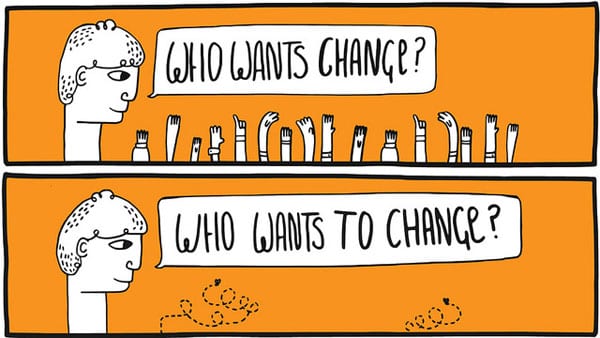
October 9, 2018; GeekWire
This story has many juicy bits about how organizations have to think when making major operational changes. If you add to this picture the information NPQ wrote about earlier this week concerning the culture at the Gates Foundation, it all makes sense. Systems are designed to resist change—until they are fully invested in a vision for something different.
Big or small, a well-run nonprofit must effectively manage organizational change and the human dimension of organizational life. These are the key takeaways from a recent state court decision that found the Bill and Melinda Gates Foundation had mishandled the hiring of a new chief data officer (CDO).
Despite its size, sophistication, and tech industry roots, the Gates Foundation missed checking some key human resource boxes when it set about to hire its first CDO. The new position was created following the failure of a major effort to strengthen the Foundation’s information technology (IT) functions and improve organizational information integration. To fill the new position, the foundation successfully enticed Todd Pierce to step away from a senior and highly paid position with Salesforce, adding his skill and experience to the Foundation’s management team. Seventeen months later, it terminated his position.
Earlier this month, according to GeekWire, King County Superior Court Judge Catherine Shaffer ruled Pierce “was undermined soon after starting his new role and was terminated for clashing with executives who didn’t believe in his vision” and awarded him more than $4 million in damages.
While there may have been agreement among Foundation leaders that a problem needed to be solved, the position was created before reaching agreement about what exactly that problem was.
As Pierce’s recruitment progressed, involving top executives like Bill Gates and the foundation’s CEO, Sue Desmond-Hellmann, it became clear that not everyone was on the same page about what the position should entail, according to the findings. Some wanted to see a new big-picture strategy that would succeed where the previous initiative failed, while others just wanted someone to “fix IT.”
Sign up for our free newsletters
Subscribe to NPQ's newsletters to have our top stories delivered directly to your inbox.
By signing up, you agree to our privacy policy and terms of use, and to receive messages from NPQ and our partners.
Pierce was recruited because he brought a big-picture perspective of how technology could create a more effective Foundation, one that would bring “more of the Foundation’s money more quickly to the people who need it through the use of digital technologies.” His approach would require not only building new technology but realigning a current organizational structure and culture to work with it. This level of change requires buy-in across the organization, but little effort was made to generate understanding and support for Pierce as he took on his new assignment. The court found that “there is no evidence [the chief operating officer] analyzed or even considered how a CDO would fit into the organization or its work flow at any point during her recruitment of Pierce; she did not discuss with program staff who were already engaged in digital technologies about the need or desire for such a role; and perhaps worse, she sent inconsistent messages about the job.”
When organizations make significant changes, they need to choose how much time and energy will be spent engaging all levels of their organization. It is clear from the court records that the Foundation thought going top-down was the best approach. In the findings of fact, it’s shown that Desmond-Hellman said “convincing program-side leaders and staff to engage in broad, cross-program ideas was a ‘tall order’ then and now. She did not survey employees about the need for a CDO prior to offering the job to Pierce, explaining she did not need to because she ‘would have predicted the outcome of the survey,’ which was that program staff would have asked ‘what is a CDO and why do I have one?’”
When this confusion about the role of the CDO began to emerge, Foundation management made another common mistake. It sought to dispel fears and tensions rather than solve real problems and take staff concerns seriously: “Time and again, [the chief operating officer] said different things to different people depending on what was most politically expedient.”
Seventeen months after he began work, Pierce was fired. Ineffective management of the process of bringing a new position into the structure may prove to be costly financially and organizationally. From the Court’s perspective, “Pierce left Salesforce because he trusted that the Foundation would come through on its promise to allow him to do the job of CDO. That promise never materialized in any meaningful way and Morgan knew or should have known that the Foundation was not prepared to support a bona fide CDO like the one she promised, which she effectively admitted at the time she terminated Pierce.”
Earlier this year, NPQ provided some advice that seems right on point:
Most of us know from experience that when important conversations about our work get stuck in avoidant and self-referential loops, it delays our ability to advance social issues and even our day-to-day practices in our organizations. This is a well-tested tenet of systems thinking, which also advises us that in their tendency to resist change, systems often throw up false signals that detour and fatally delay change efforts. This requires that we remain attentive to the content of the conversations that are helping us to advance our work and distinguish them from those that would retard progress. There is, of course, a good deal of literature about how we can understand and implement change, but much of it will reflect the following basic structure: What we have (contrasted against) what we want—and how to get from here to there.
For the Gates Foundation, as it would be for every organization, mismanaging a change process will be costly. Financially, having to litigate a termination, win or lose, is expensive. But on a deeper level, the cost of not effectively solving a problem and of leaving the tension of change unresolved may prove more expensive.—Martin Levine












